‘Things have drastically reversed’: Aussies flee major city to ‘live elsewhere’
Shock new data has revealed one area Aussies are escaping in record numbers – and the surprising place they are moving to instead.
ANALYSIS
Since the Covid pandemic first hit Australia in March 2020, the internal flows of the domestic population have changed dramatically.
In the last full year of data prior to the pandemic, Melbourne was still seeing net domestic population inflows and Perth was still dealing with the outflows associated with the hangover from the conclusion of a mining boom.
In the nation’s most populous city, Sydney, it’s almost two-decade run of domestic outflows continued, but its domestic population continued to grow through the natural increase (births minus deaths).
But since then, all of those things have drastically reversed.
Melbourne is seeing negative levels of net domestic migration.
Perth is seeing a strong influx of Australians heading West.
And the net number of people leaving Sydney to live elsewhere in the nation now outstrips the natural increase in the city’s population.
Battle of the regions
There is a widely held perception that Melbourne, after all the challenges its people faced during the pandemic, is the capital city seeing the largest mass exodus of people.
MORE: Huge prediction for Aussie house prices
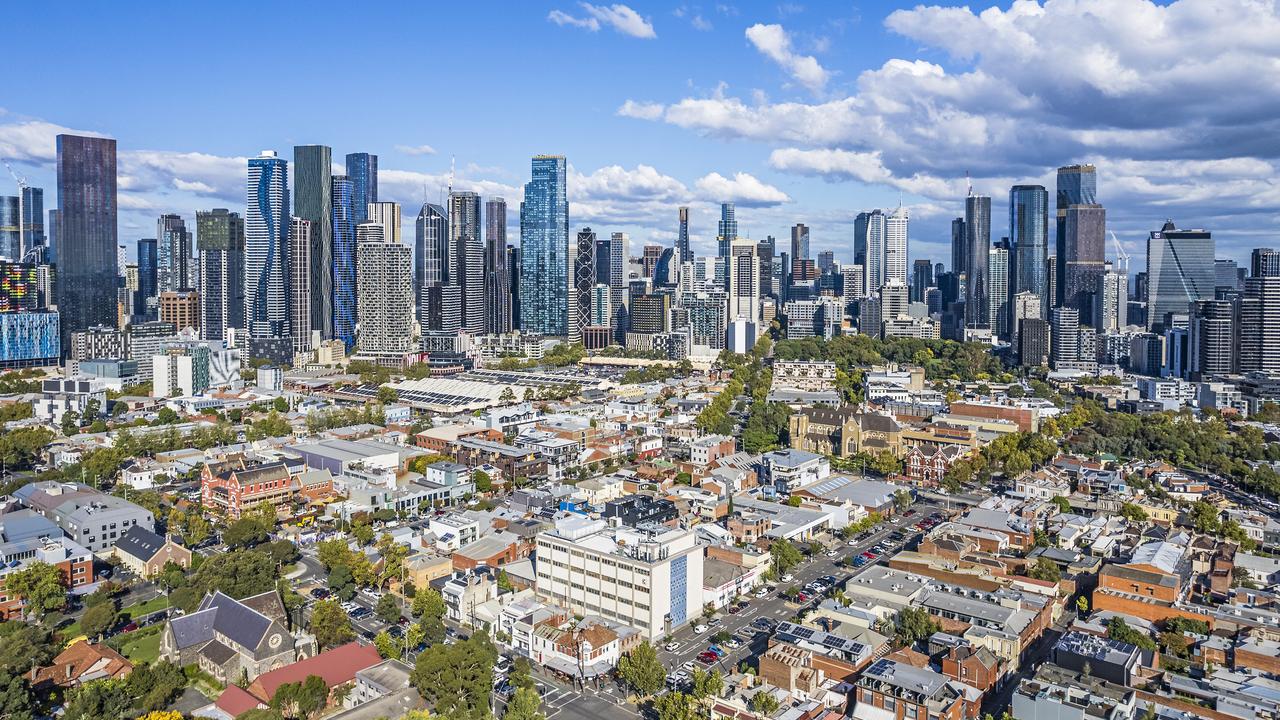
Yet despite this relatively common view, Melbourne doesn’t win that undesirable crown in nominal or per capita terms.
In the last three years of internal migration data from the Australian Bureau of Statistics, which covers from 2021-2022 to 2023-24, the strongest net inflows was seen by Brisbane, which added 56,100 domestic arrivals, regional Queensland, which added 54,900 and Perth with 27,500.
On the other hand, the dubious prize for the largest net domestic outflows belongs to Sydney, which saw 129,300 exits in net terms, followed by Melbourne with 38,700 and Darwin with 7200.
MORE: Where the population has boomed most and why
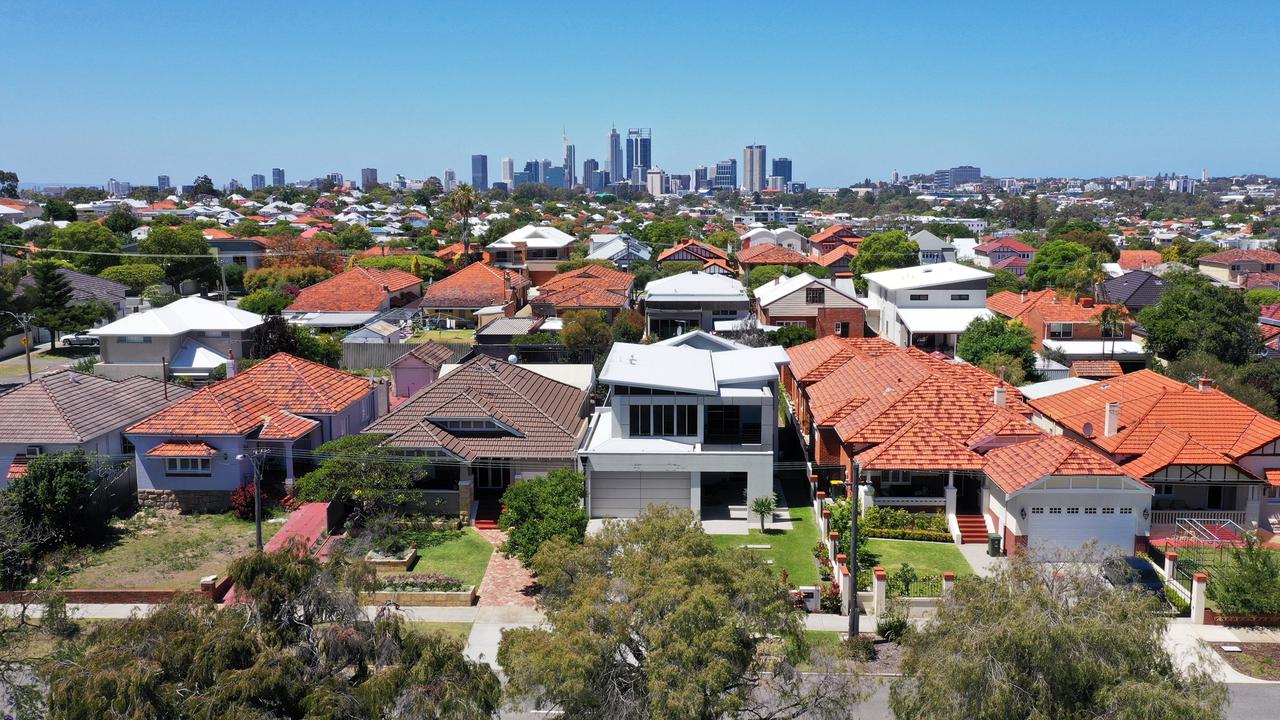
Overall, eight cities and regions in total saw net domestic migration outflows cumulatively during 2021-22 to 2023-24 – Sydney, Melbourne, Adelaide, Hobart, the rest of Tasmania, Darwin, the rest of the Northern Territory and the Australian Capital Territory (ACT).
Of the cities with net domestic migration outflows, Sydney was responsible for very nearly two-thirds (66.5 per cent) of the national total, followed by Melbourne with 19.9 per cent and Darwin with 3.7 per cent.
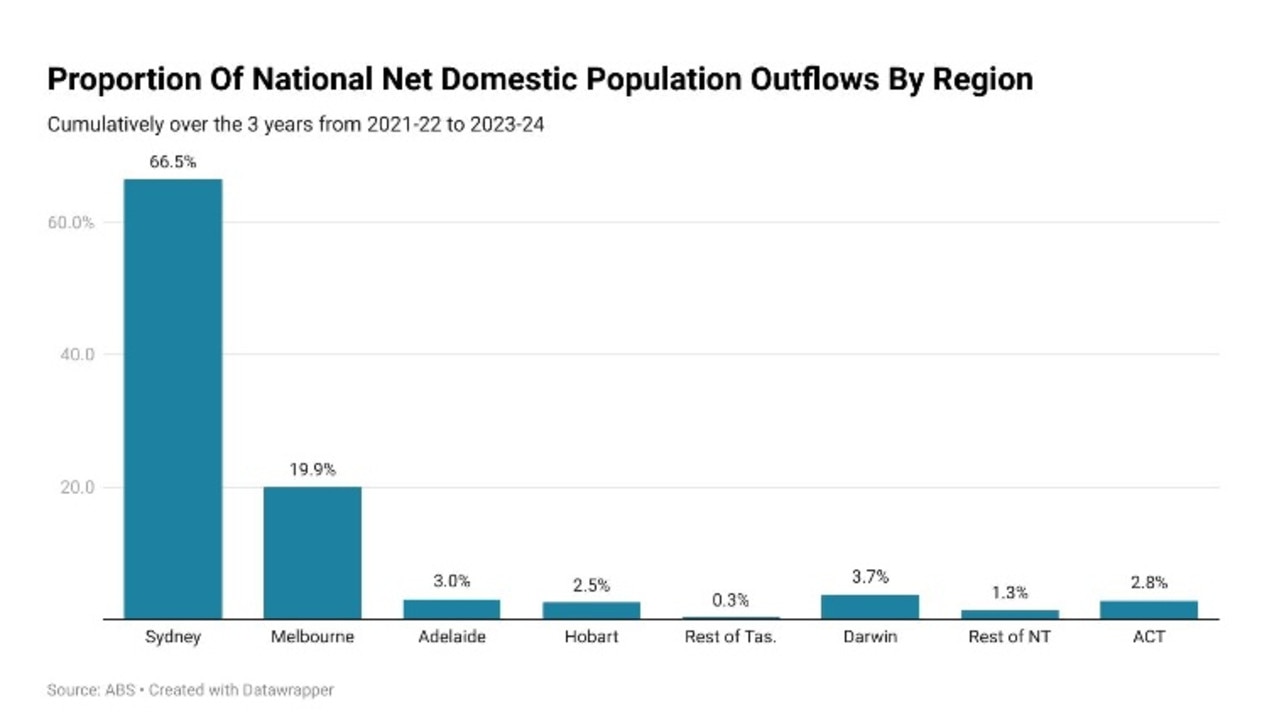
In terms of net domestic population inflows by region, things are somewhat more balanced.
Brisbane sees the largest share of net domestic inflows with 28.9 per cent, followed by the rest of Queensland with 28.2 per cent and Perth with 14 .2 per cent.
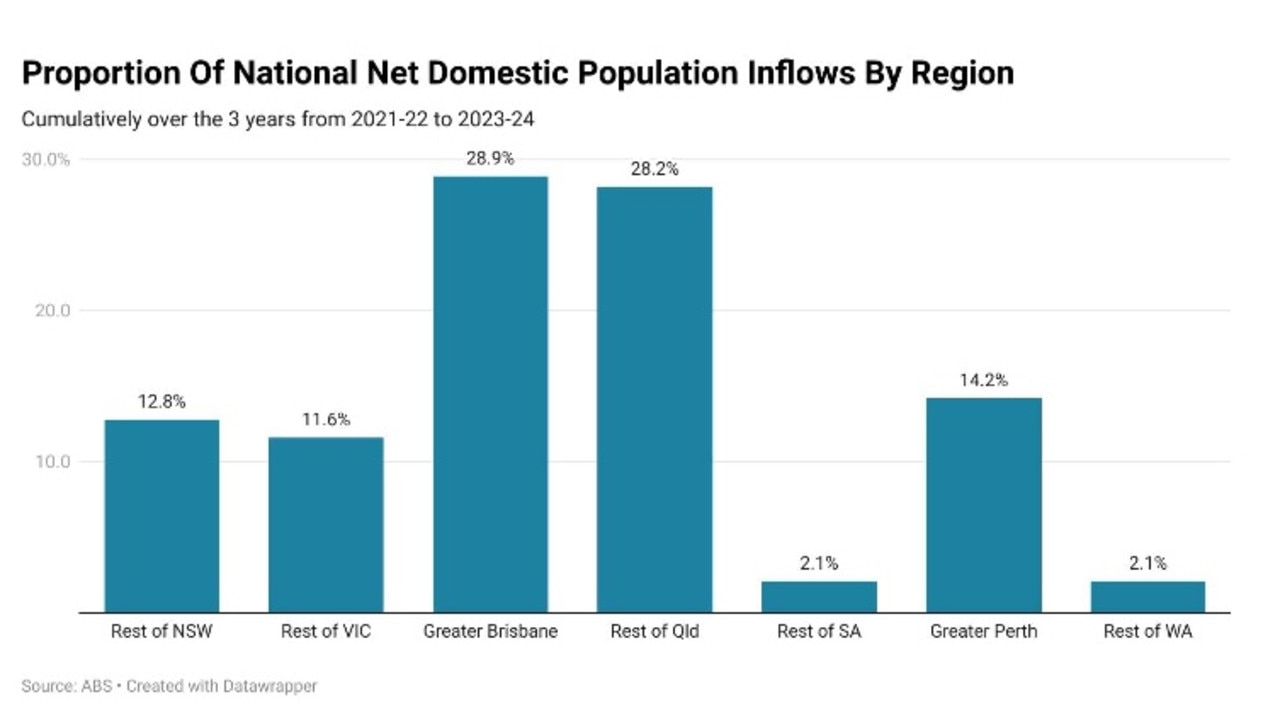
The biggest loser
While most of the nation’s capital cities saw net outflows of people through domestic migration, of the big five mainland capital cities, there is only one where the domestic outflows are so large that if not for international migration, the population would be shrinking.
Sydney.
During the 2023-24 financial year, the nation’s largest city saw a natural increase in the population (births minus deaths) of 27,738.
Meanwhile, 41,086 Sydneysiders called it quits and moved elsewhere in the nation.
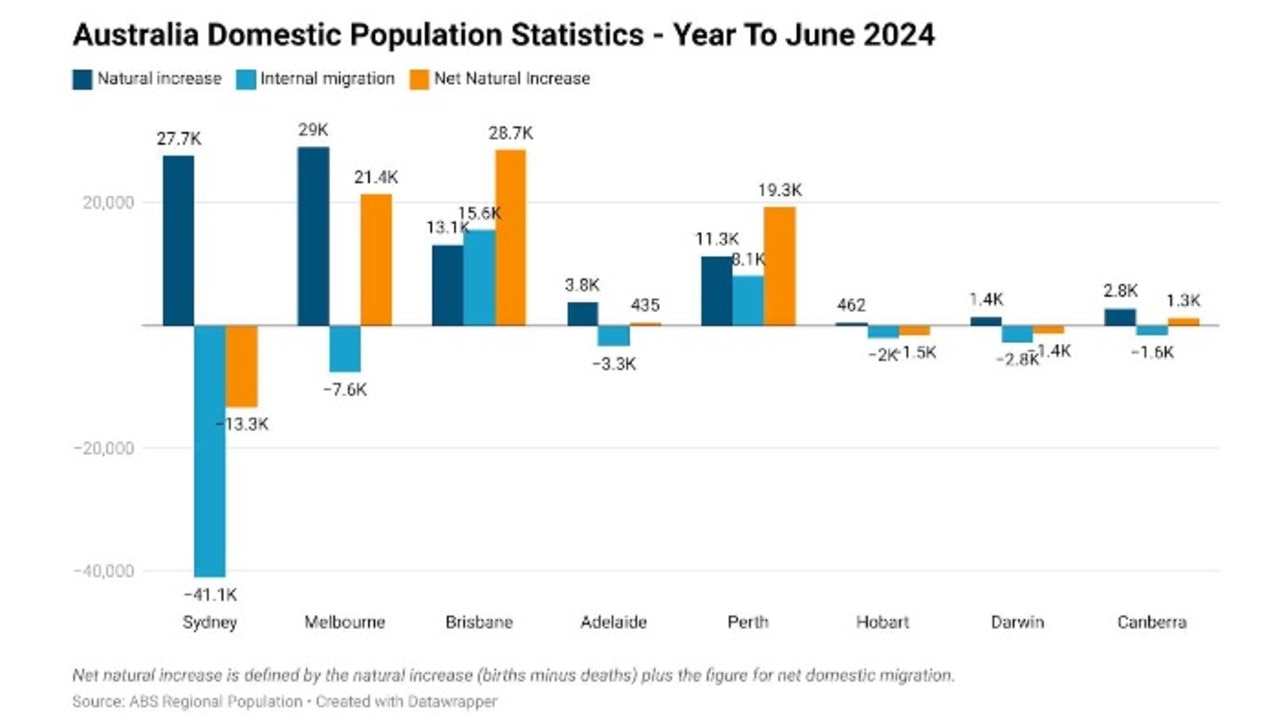
Sydney losing more people to domestic migration than it gains is not a new development – it was shedding between 0.3 per cent and 1.0 per cent of its population to internal migration for almost 20 years prior to the pandemic.
But the shrinking population through solely domestic developments arose in 2020-21 and is showing little sign of drawing to a close.
Based on the last three years of data which cover 2021-22 through to 2023-24, Sydney has lost 129,323 people to domestic migration in net terms.
Looked at in a slightly different way, 349,230 Sydneysiders left between 2021-22 and 2023-24, with 219,907 people arriving from other parts of the country.
According to a 2023 paper from the think-tank e61 Institute, “housing affordability” is a prime suspect of driving population outflows.
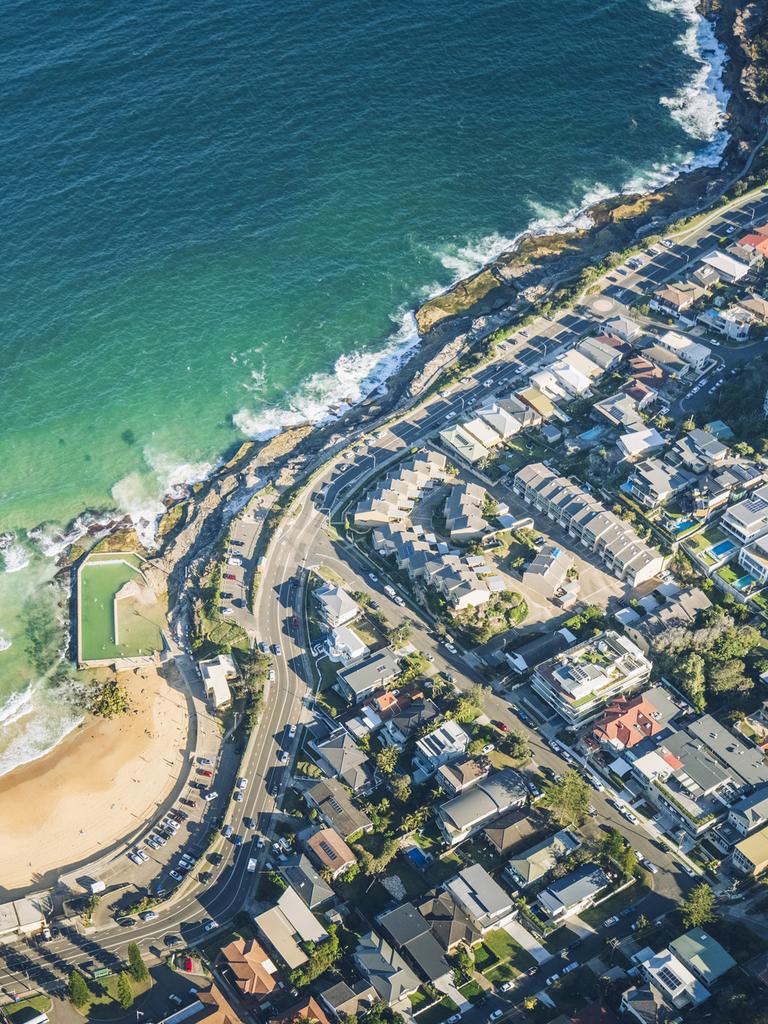
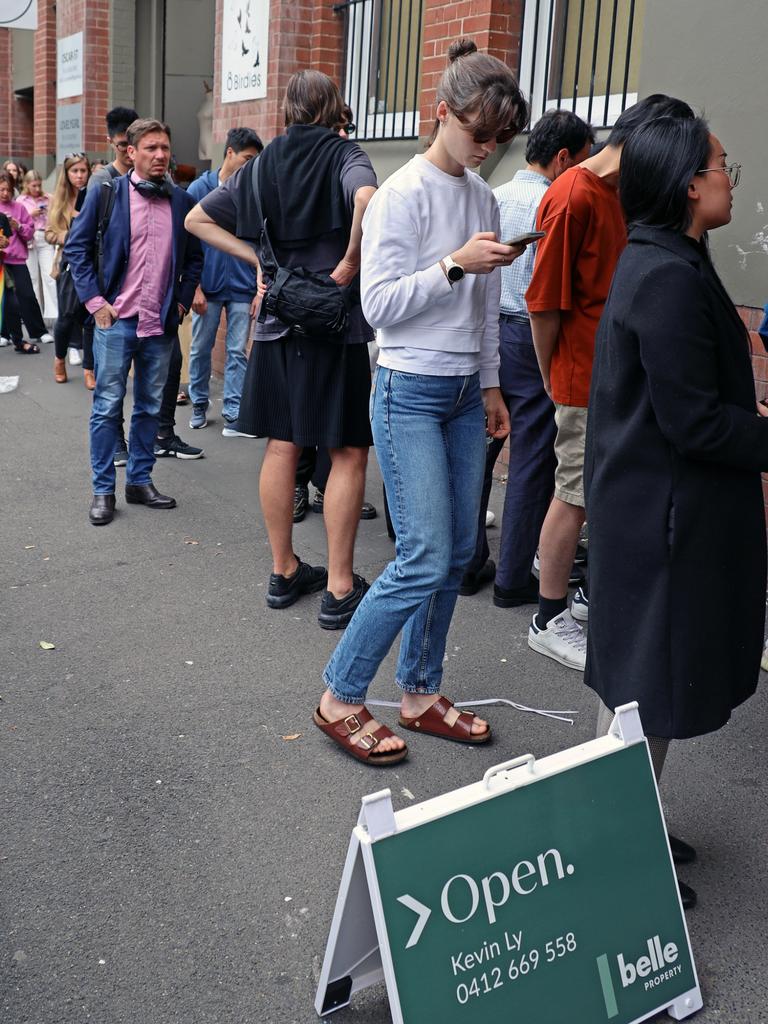
When broken down by age demographic, the largest per domestic outflows from Sydney is seen by people in their 30s.
With the median first homebuyer nationally now 36 years of age and houses in Sydney largely unaffordable for those on near median household incomes, its logical that some in that stage of their lives would look elsewhere to be able to afford a home that is more appropriate for their life circumstances.
With regional Queensland, regional NSW and Brisbane historically among the main destinations for the mass exodus of Sydneysiders, to what degree these flows will continue amid a narrowing gap between the various housing markets and Sydney is very much an open question.
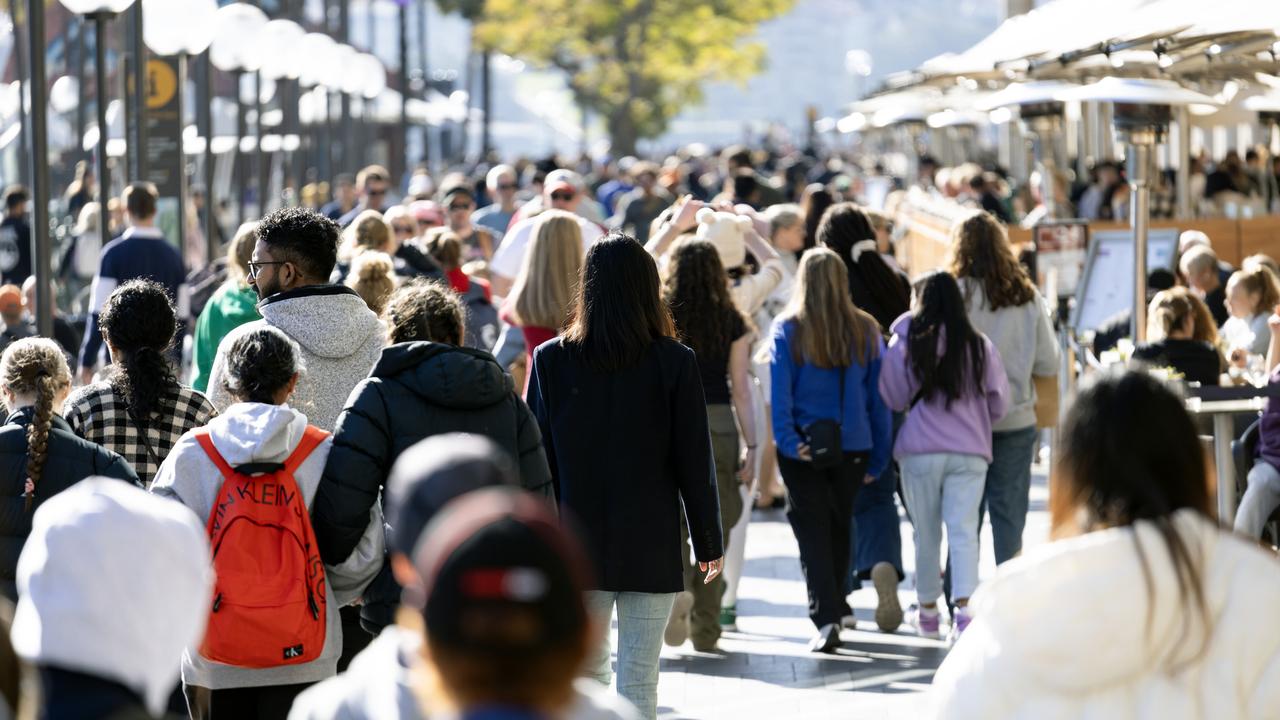
The takeaway
Going forward, the increased flows of retirees from the southern states to Queensland is likely to continue as ageing demographics continue to assert themselves.
On the other hand, the makeup of net flows is likely to evolve.
With housing affordability a major driver of internal population flows, the dramatic increases in housing prices in South East Queensland in particular is likely to force more younger Melburnians and Sydneysiders into a rethink of a move up north.
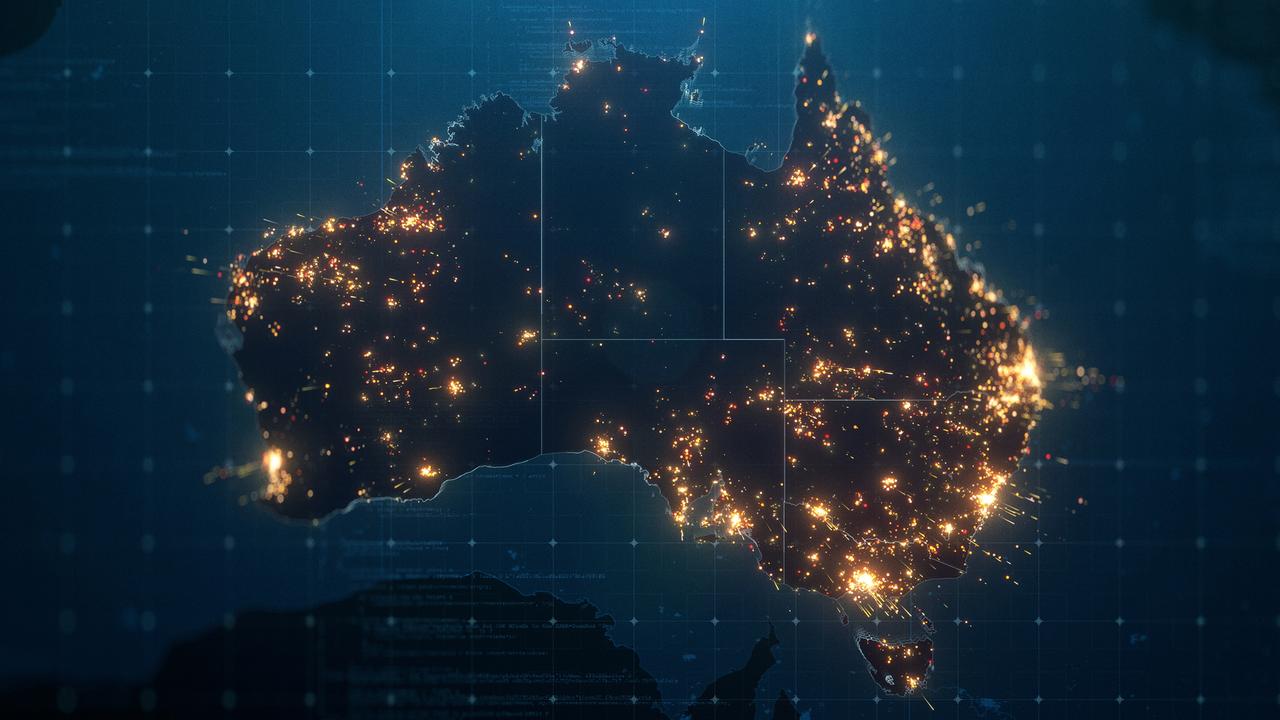
Where once Brisbane or the Sunshine Coast was an oasis of relative housing affordability for first home buyers and young families looking to make an exit from Sydney and Melbourne, today, both Queensland markets in aggregate are now more expensive than Melbourne and the premium commanded by Sydney real estate has narrowed significantly.
As the economy, demographics and housing markets continue to evolve over time, so too will the flows of Australians seeking out the locale that best serves their family’s needs and priorities.
Tarric Brooker is a freelance journalist and social commentator | @AvidCommentator






